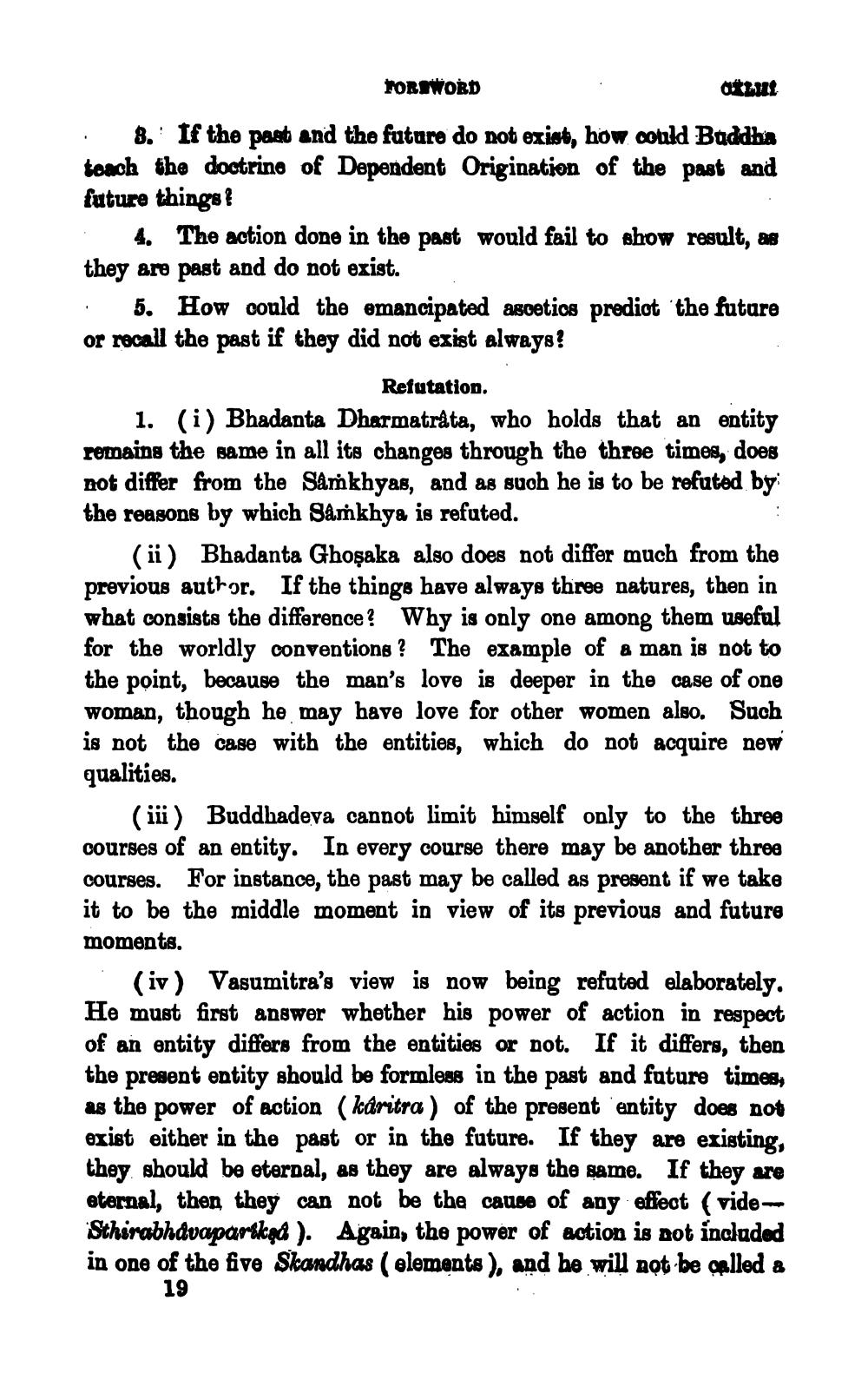________________
HORIWORD
8. If the past and the future do not exist, how could Buddha teach the doctrine of Dependent Origination of the past and future things?
4. The action done in the past would fail to show result, as they are past and do not exist.
5. How could the emancipated ascetios predict 'the future or recall the past if they did not exist always!
Refutation. 1. (i) Bhadanta Dharmatråta, who holds that an entity remains the same in all its changes through the three times, does not differ from the Samkhyas, and as such he is to be refuted by: the reasons by which Samkhya is refuted.
(ii) Bhadanta Ghoşaka also does not differ much from the previous author. If the things have always three natures, then in what consists the difference? Why is only one among them useful for the worldly conventions ? The example of a man is not to the point, because the man's love is deeper in the case of one woman, though he may have love for other women also. Such is not the case with the entities, which do not acquire new qualities.
(iii) Buddhadeva cannot limit himself only to the three courses of an entity. In every course there may be another three courses. For instance, the past may be called as present if we take it to be the middle moment in view of its previous and future moments.
(iv) Vasumitra's view is now being refuted elaborately. He must first answer whether his power of action in respect of an entity differs from the entities or not. If it differs, then the present entity should be formless in the past and future times, as the power of action ( karitra) of the present entity does not exist either in the past or in the future. If they are existing, they should be eternal, as they are always the same. If they are eternal, then they can not be the cause of any effect ( videSthirabhåvaparikadha ). Again, the power of action is not included in one of the five Skandhas ( elements ), and he will not be aplled a
19




